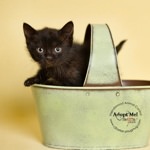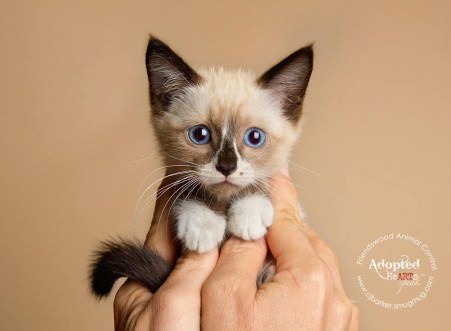 HeARTs Speak member, Cynthia Barker, has an undeniable flair for photographing felines. But rest assured, her talents don’t stop there. In fact, she’s a tireless, portrait-producing force for all of the animals that call her local rescue group, Friendswood Animal Advocates, ‘home’.
HeARTs Speak member, Cynthia Barker, has an undeniable flair for photographing felines. But rest assured, her talents don’t stop there. In fact, she’s a tireless, portrait-producing force for all of the animals that call her local rescue group, Friendswood Animal Advocates, ‘home’.
A member since early 2011, Cynthia embodies what it means to be a HeARTs Speak artist, and devotes a huge portion of her time to capturing quality, memorable images for the innumerable homeless animals that pass in front of her camera. Cynthia is providing us with a fascinating glimpse into one of her typical days in our first ‘Day In The Life’ feature:
“My day of photographing at the shelter actually starts the day before.”
 I charge the batteries for my 2 camera bodies and Speedlight’s, reformat my memory cards, and pack my car with seamless paper backgrounds, blankets, props, and studio equipment. The next morning usually begins with the best alarm clocks ever: hungry cats! No one told me that once you have a cat you could never sleep in. After feeding my 5 cats (3 are fosters from the shelter I shoot for) and 2 dogs, I head to the Friendswood Animal Control facility early in the morning.
I charge the batteries for my 2 camera bodies and Speedlight’s, reformat my memory cards, and pack my car with seamless paper backgrounds, blankets, props, and studio equipment. The next morning usually begins with the best alarm clocks ever: hungry cats! No one told me that once you have a cat you could never sleep in. After feeding my 5 cats (3 are fosters from the shelter I shoot for) and 2 dogs, I head to the Friendswood Animal Control facility early in the morning.
I like to start shooting by 9am most of the year, as it gets so hot in our area of coastal Texas, and the sun gets very intense quickly. We have very little shade, though volunteers have recently planted a lot of trees in the dog play areas, so soon we will have more.
It takes me a few minutes to wander through the dog housing areas to write down the ID numbers and any information available on the new dogs that need photos. Then my volunteer helper and I begin shooting. I try to get portrait-type of images of each animal as well as shots that show the dog interacting with the volunteer; sitting for treats, getting petted or playing with a toy or even just running free and happy.
I tend to spend 15 to 20 minutes with each animal. We try to guess what mix of breeds the dog might be, how old it is, what it weighs, and some things about its personality, such as temperament and any commands or leash training it might know. Often we have to name it too, so we try to come up with a suitable and catchy name. When I send out those animals photos for posting on Facebook and Petfinder, I also write the bio, so I like to give as much information as I can to help potential adopters find the right animal for them.
 “I never know how many new animals are waiting each week.”
“I never know how many new animals are waiting each week.”
Our shelter is not large; there are 12 to 15 stray-hold and quarantine dog kennels and approximately 20 cat cages for the incoming cats. Usually I have to photograph 6 to 10 new dogs, and in kitten season it can be 20 new kittens and cats. Sometimes a volunteer will give me advance notice that there is a litter of puppies, so that I can bring a container to try to get the whole group, though that’s not often successful! One puppy is fast but a whole litter of puppies is usually too fast for me to get in one shot.
 After I finish with the dogs, then I head inside and set up my folding table, background and lights in our facility’s Intake room, where I photograph cats and kittens, and occasionally small dogs and puppies. Again, I visit each cat holding room and jot down ID numbers and information for the bio I write to accompany the photos.
After I finish with the dogs, then I head inside and set up my folding table, background and lights in our facility’s Intake room, where I photograph cats and kittens, and occasionally small dogs and puppies. Again, I visit each cat holding room and jot down ID numbers and information for the bio I write to accompany the photos.
A different volunteer usually helps me with the feline photographs. It helps that I have worked with both of my volunteers for several years now so we know how to work together and they know how I like them to handle the animals. For the cats and kittens I try to get close-ups of their faces, whole body shots, some images of them playing with a toy, and some of them being petted or held so a potential adopter can see the size of the animal.
“On high volume days I can spend 4 to 5 hours getting photographs of the new animals.”
Then I head home and start the much longer process of editing. I wish I was not such a perfectionist and did not feel the need to edit out leashes and eye goobers, but I am, so I do.
I shoot on Wednesdays so that I can edit for a couple of days and send out the photos of the new animals before the weekend so that adopters have the opportunity to go to the shelter and adopt on Saturday. Sometimes the animal has just come into the facility and their stray/hold is not up for a few days so those I leave for last and edit the animals that are available first. I try to get all my errands run on Mondays and Tuesdays so that I have the end of the week to edit photos. It sure has cut down on my previous hobbies, and my husband always knows where to find me!
 Our shelter is a city Animal Control Facility and as such it is a kill facility. I helped found Friendswood Animal Advocates back in 2009 when I first learned about how dismal our city’s old facility was. I have lived in this town for over 35 years and had never gone there; if we found a stray animal we always kept it and tried to find its owners or found it a new home, which was sometimes ours.
Our shelter is a city Animal Control Facility and as such it is a kill facility. I helped found Friendswood Animal Advocates back in 2009 when I first learned about how dismal our city’s old facility was. I have lived in this town for over 35 years and had never gone there; if we found a stray animal we always kept it and tried to find its owners or found it a new home, which was sometimes ours.
“Then one year I learned about the conditions at our facility and my husband happened to be serving as a city council member, so we visited the facility. We were horrified.”
We discovered that the animals receive minimal food and water, absolutely no networking, no time out of the kennels, and were euthanized for space. Several women were trying to volunteer there and we decided to form Friendswood Animal Advocates to advocate for the animals, and to encourage our city to fund a new facility. My husband’s position on the City Council was a great help and a new facility opened in December 2011.
My group continued to appeal to the City Council and was able to secure funding for a new Shelter Manager position, as well as a cleaning staff, and a soon-to-be-paid position for the front desk.
 “With everyone’s combined hard work, euthanasia is now reserved for very ill animals, or those too aggressive to be safely adopted out.”
“With everyone’s combined hard work, euthanasia is now reserved for very ill animals, or those too aggressive to be safely adopted out.”
Regardless, it is so hard to learn that an animal I met, played with, and photographed has not made it out alive. However, I then remember all the ones I have photographed and that have been adopted since I began helping. Here are the approximate numbers:
2010: 63 animals, 2011: 204 animals, 2012: 349 animals, 2013: 483 animals, and as of May 2014: approximately 155 animals

